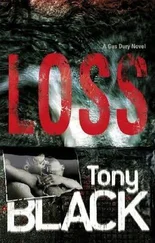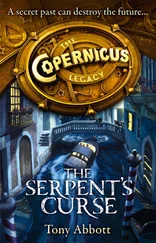It was not by chance that history-as-nostalgia was so very pronounced in these two national settings in particular. Having entered the twentieth century as proud imperial powers, both countries had been stripped of territory and resources by war and decolonization. The confidence and security of global empire had been replaced by uneasy memories and uncertain future prospects. What it meant to be French, or British, had once been very clear, but no longer. The alternative, to become enthusiastically ‘European’, was far easier in small countries like Belgium or Portugal, or in places—like Italy or Spain—where the recent national past was best left in shadow. [401]But for nations reared within living memory on grandeur and glory, ‘Europe’ would always be an uncomfortable transition: a compromise, not a choice.
Institutionally speaking, the British turn to nostalgia began almost immediately after World War Two, when the Labour Minister Hugh Dalton established a ‘National Land Fund’ to acquire sites and buildings of ‘beauty and history’ for the nation, to be administered by a National Trust. Within a generation ‘NT’ properties—parks, castles, palaces and ‘areas of outstanding natural beauty’ had become prominent tourist attractions: some of them still occupied by their original owners, who had bequeathed their heirlooms to the nation in return for significant fiscal relief.
From the Fifties through the Seventies a reassuring version of the recent past surfaced and resurfaced in the form of war films, costume dramas and clothing: the recycling of Edwardian fashion, from teddy boys to hirsute facial ornaments, was a particular feature of this trend—culminating, in 1977, in a self-consciously ‘retro’ and nostalgic celebration of the Queen’s Silver Jubilee amid street parties, photographic exhibits and nationwide invocation of older and better times. But after the Thatcherite revolution of the Eighties even this element of continuity was lost. In the course of that decade the Britain—more precisely the England—that could feel a certain warm glow of recognition when looking back to the ’40s, or even to 1913, was quite swept away.
In its place there emerged a country incapable of relating to its immediate past except through the unintentional irony of denial, or else as a sort of disinfected, disembodied ‘heritage’. The denial was well captured by the insecurities of the old educational establishment of Oxford and Cambridge, humiliatingly constrained in the new Blairite atmosphere of egalitarian opportunism to insist on their ‘anti-élitism’; or in the grotesque self-deprecation of cultural institutions like London’s Victoria and Albert Museum, reduced in the 1990s to marketing itself with wink and nod as ‘an ace caff’ with quite a nice museum attached’.
As for the nation’s heritage, it was quite avowedly transformed into a business proposition, the ‘heritage industry’: promoted and underwritten by a new government ‘Department of National Heritage’. Established in 1992 by a Conservative government but in conformity with plans originally drafted under Labour, the new ministry would later be absorbed under Tony Blair’s New Labour governments into a revealingly labeled ‘Department for Culture, Media and Sport’. The ecumenical background is significant: heritage was not a political-party project. The past was not abused or exploited; it was sanitized and given a happy face.
Barnsley, at the heart of the defunct South Yorkshire coalfield, was a case in point. Once an important mining hub, Barnsley in the post-Thatcher era had been transformed beyond recognition. Its town center was eviscerated, its civic core ripped up and replaced by tawdry pedestrian malls encased in concrete parking garages. All that remained were the town hall and a handful of neighbouring buildings, architectural relics of Barnsley’s nineteenth-century municipal glory, to which visitors were directed by fake-ancient, ‘olde-worlde’ signposts. Meanwhile, book-stalls in the local market now specialized in selling local nostalgia to the area’s own residents (Barnsley was not on any established tourist route)—sepia photos and prints and books with titles like The Golden Years of Barnsley or Memories of Old Doncaster (a neighbouring town): reminders of a world only recently lost and already half-forgotten.
A few miles from Barnsley, near the village of Orgreave, the ‘Battle of Orgreave’ was rerun for television in 2001. The June 1984 confrontation there between striking miners and police was the most violent and desperate of the clashes that marked Margaret Thatcher’s confrontation with the National Union of Miners that year. Since then many of the miners had been unemployed—some of them took part (for cash) in the re-enactment, dressed in appropriate ‘period’ clothing. This ‘performing’ of famous battles was an established English pastime. But that Orgreave should have been getting the ‘heritage’ treatment was illustrative of the accelerated historicizing now under way. After all, it took three hundred years before the English got around to re-enacting the Civil War Battle of Naseby a couple of hours to the south; Orgreave was being rerun for television just seventeen years after the fact.
The town of Barnsley figured prominently in The Road to Wigan Pier , where George Orwell wrote unforgettably of the tragedy of inter-war unemployment in Britain’s industrial working class. Seventy years on, in Wigan itself, there was now not only a pier (Orwell famously remarked upon its absence) but also a signpost on the nearby motorway encouraging people to visit it. Next to the cleaned-up canal there had been constructed ‘The Way We Were’ museum and ‘The Orwell at Wigan Pier’, a generic modern pub selling burgers and chips. Orwell’s fearful northern slums had indeed been erased—not only from the landscape but also from local memory: Memories of Wigan 1930-1970 , a guide on sale at the museum, offered pretty sepia pictures of demure salesgirls and quaint, forgotten shops. But of the pits and the workers whose condition drew Orwell there and gave Wigan its dubious fame, there was not a word.
It was not just the North that had been given the Heritage treatment. In England’s West Midland potteries district, tourists and local schoolchildren were encouraged to learn how Josiah Wedgwood, the eighteenth-century ceramics manufacturer, fashioned his famous wares. But they would search in vain for evidence of how the pottery workers lived or why the region was called the Black Country (Orwell described how even the snow turned black from the belching smoke of a hundred chimneys). And such examples—where the way things ought to have been was substituted for the way they were (or are)—could be multiplied hundredfold.
Thus the real, existing British railways were an acknowledged national scandal; but by the year 2000 Great Britain had more steam railways and steam-railway museums than all the rest of Europe combined: one hundred and twenty of them, ninety-one in England alone. Most of the trains don’t go anywhere, and even those that do manage to interweave reality and fantasy with a certain marvelous insouciance: summer visitors to the West Riding of Yorkshire are invited to ride Thomas the Tank Engine up the Keighley-Haworth line to visit the Brontë Parsonage.
In contemporary England, then, history and fiction blend seamlessly. Industry, poverty, and class conflict have been officially forgotten and paved over. Deep social contrasts are denied or homogenized. And even the most recent and contested past is available only in nostalgic plastic reproduction. This countrywide bowdlerization of memory was the signal achievement of the nation’s new political élite. Riding on Mrs. Thatcher’s coattails, New Labour successfully dispensed with the past; and England’s thriving Heritage industry has duly replaced it with ‘the Past’.
Читать дальше












